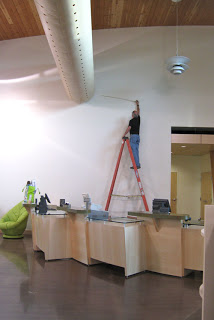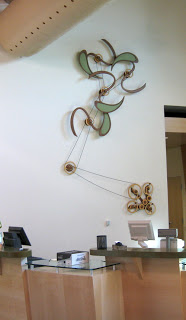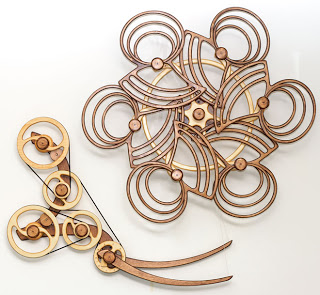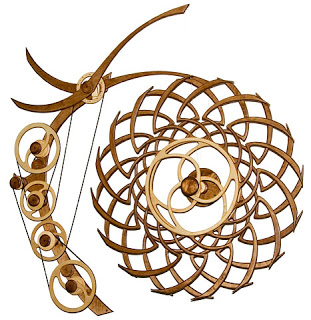Seascape at Home
 Thursday, July 31, 2008 at 8:14PM
Thursday, July 31, 2008 at 8:14PM
I built Seascape in 2002 for the special sculpture wall in our home. My wife Marji designed and we built our home/studio in 1978. A prime requirement was that it have interesting walls. There is one special wall in our living room where I get to "play" with whatever comes into my head. It is my creative canvas.
I had two goals when I started this design - I wanted a smooth flowing, wave like motion and a long run time. 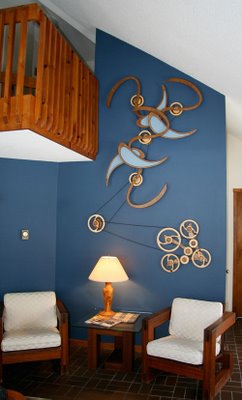
For the run time I decided to use my first triple winding mechanism. I have used double winding mechanisms in several designs that give me about 16 hours of run time. I hoped that by adding another spring and winder I could push the run time to 24 hours. My experiment was successful and Seascape does run for 24 hours on a single winding.
You can see the motion in the short video below.

